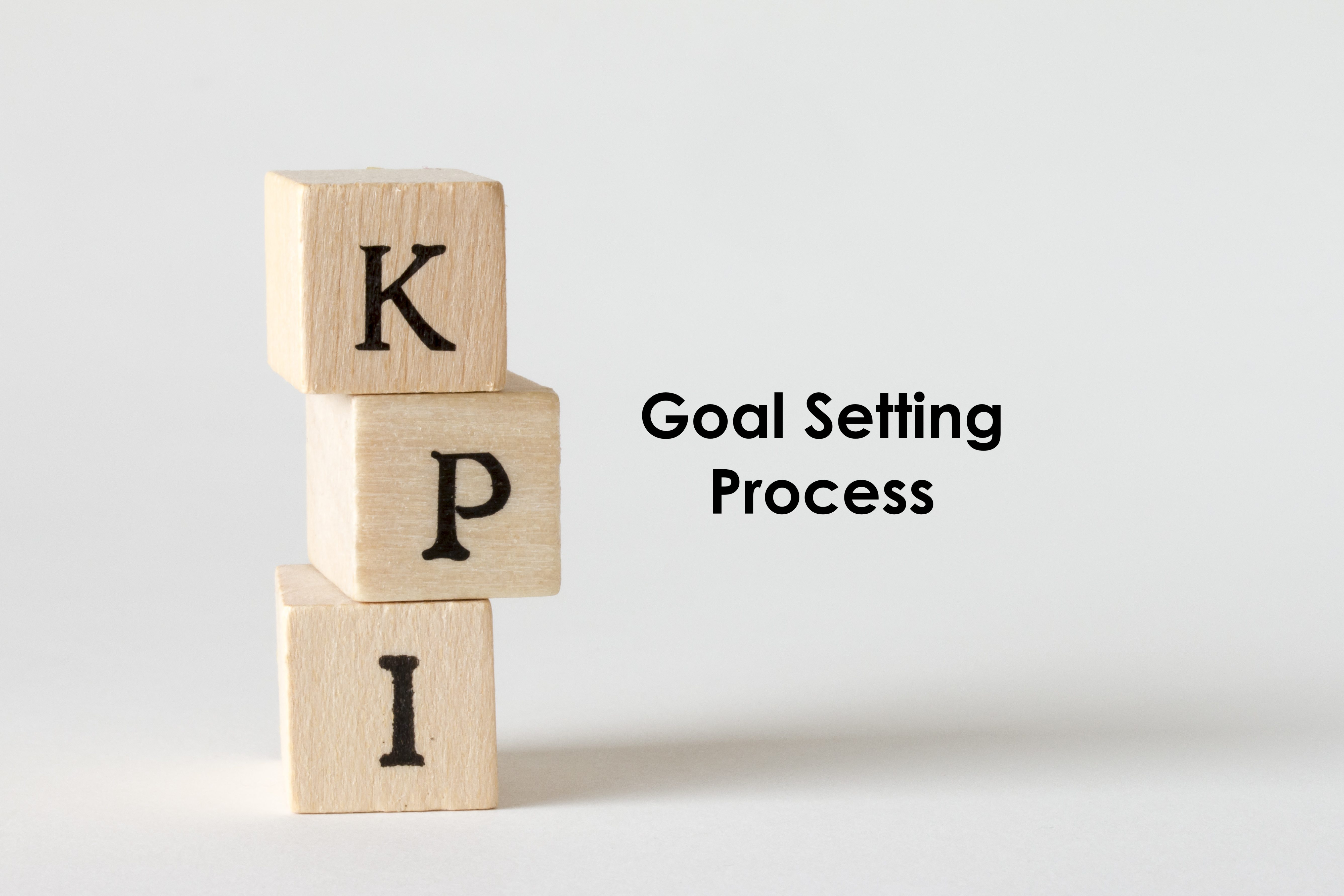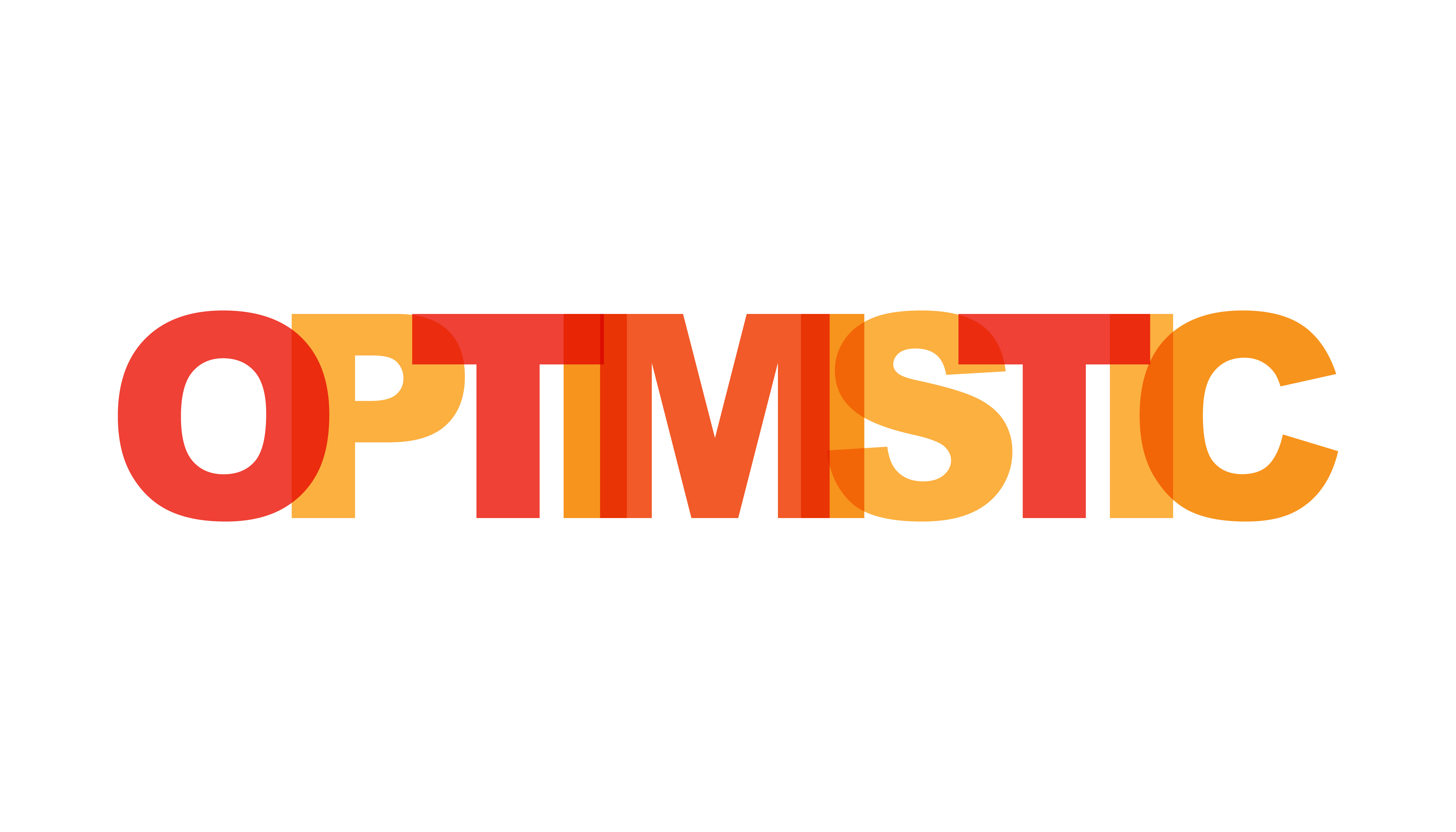
by Julie | Jan 9, 2020 | Leadership, Management
We just started a new decade! The following list was created to get you started on achieving your 2020 vision.
- Be crystal clear on what you want to achieve. I was recently reading the book titled “Train Your Brain for Success.” If you tell your brain where you want to go, it will start working on how to get there. But if you aren’t clear, the brain will wait for further clarification. The analogy the book used was this: imagine telling your GPS you want to go to a bank. It will start searching for banks, but will wait for further instructions before it begins developing the route. It is imperative that you tell your brain exactly what you want to achieve. As soon as you do, it will get to work on making sure you achieve it. This applies to individuals and to organizations. If your team isn’t sure about direction, they will stay on the same path until they feel comfortable that a new direction is set.
-
Instill the necessary discipline. I’m not big on having structure. I like the freedom to do what I want to do. But I know without the necessary structure, I won’t get to where I want to be. So I’ve been working on putting the framework together to ensure l’m completing the necessary activities to achieve my goals, without overburdening myself with too much structure. Ask yourself, what structure do I need to put in place to keep me on track? Be honest with yourself. Then build that structure into your weekly schedule and honor that structure.
- Don’t confuse activity with accomplishment. I think many of us get caught up in the busy-ness trap. But being busy doesn’t mean we are being productive. Do you know what you need to accomplish on a daily, weekly or monthly basis in order to achieve your goals? Most people don’t schedule time for those important things because they are busy doing the more fun and easy things. I recommend that you look at what you need to do in order to achieve your goals, and then schedule those first. Then fill in your time with the other, less important tasks. My greatest gains come from the tasks described as “important but not urgent” in Stephen Covey’s book The 7 Habits of Highly Effective People. Those tasks may require more thinking and less doing. But if you spend more time on them, your productivity will skyrocket.
-
Be open to new experiences and ideas. For years, I have heard about the value of meditation, but I kept pushing it off as a new age movement. As I found it harder and harder to focus, I started searching for ways to reduce the clutter in my brain. Turns out, meditation is a powerful technique that people have been using for thousands of years. Teaching my brain to be more present helped reduce stress, increased focus and provided more calm. After incorporating this into my life and enjoying the benefits, I realized there have been other areas in which I have been close-minded. So one of my goals for the past year was to try something new every month. This goal has helped me expand my mind and be open to new experiences.
-
Be aware of the limitations you place on yourself. Have you listened to the words you say to yourself? Negative thoughts impact what we believe we can achieve and what we are willing to attempt. If you want to reach your full potential, be mindful of this. Henry Ford said it best when he said, “Whether you think you can or you think you can’t—you’re right.”
-
Be authentic. When I hear the word authentic, I think of Brene Brown, but l‘ve also heard many other people talk about the importance of being authentic. This is something I’ve been working on as it isn’t something that comes naturally to me. However, I do know that when I share my authentic self, I have the opportunity to connect more deeply with individuals around me, and I am continually reminded of just how precious those connections can be.
-
Take care of yourself. Let’s face it, we aren’t getting any younger, and we only get one body for this journey. Eat well, drink lots of water, exercise and sleep. You can’t perform at the level you desire if your body isn’t healthy. And remember, taking time to care for yourself isn’t selfish, it is essential if you want to love and support those around you.
-
Look beyond yourself. It is possible #7 and #8 are at odds but I don’t think so. If you care for yourself, then you’ll have the energy to look beyond yourself. And while I find myself to be very interesting (I mean, who doesn’t), I find helping and caring for others much more rewarding. Put yourself in another person’s shoes and try to see a situation from their perspective. Then act in a way that acknowledges that you see them and value them: the personal reward will be priceless.
-
Never stop learning. My father turned 80 years old last year. He continues to expand his mind through reading, learning foreign languages and keeping up on the latest technology in his field. Together with my mother, he started a foundation that serves the underprivileged in Haiti; he also volunteers his time at a local free clinic and spends time with his family to help them reach their full potential. He is a great role model for those of us who want to continue to grow and expand our mind. What areas do you want to gain knowledge in? Those areas may not be related to your field of study, but they can help enrich your life.
-
Enjoy the journey. Not every day is going to be fun. There will be times, tasks and experiences that you won’t automatically enjoy. But that doesn’t mean you can’t find a way to enjoy them. In a book called The Highest Goal, author Michael Ray introduces “Live-Withs.” The idea is to find ways to make the most of things that you don’t enjoy. If you have a traffic-filled commute, how could you learn to enjoy the commute? For me, it would be to listen to a great podcast (Revisionist History) or practice my Spanish. But the idea is to find ways to bring enjoyment into areas that are lacking. So, I’ll challenge you by thinking about how you can change your vantage point in order to “enhance the ride.”
Do you feel you have areas that need some strengthening in order to maximize your 2020 impact? Do you or your team need help becoming crystal clear on what you want to achieve in 2020? If so, give me a call or send me an email. In a short 90-minute meeting, we can outline your goals and identify the critical success factors to help you start this decade with a clear direction and a sense of purpose.

by Julie | Jan 1, 2020 | Leadership, Management
“The trouble with not having a goal is that you can spend your life running up and down the field and never score.” —Bill Copeland
Over the past few months, I’ve been writing about tips that have helped me be present in the moment. This topic came out of the lesson I took away from my Camino in September: to be more intentional with my thoughts and actions. This journey has caused me to change how I approach my life, including being vulnerable, clarifying my priorities, reducing distractions and adding discipline around time management. This hasn’t been easy for me, and I definitely have a long ways to go. But I believe I’m on the right track. My focus and productivity have increased, and I’m excited to see where 2020 takes me. One topic that many of you have asked me about is how to set goals. So, I’m dedicating this newsletter to that topic.
Setting goals is different than writing a wish list. I’ve had some things l’ve thought about striving for but, when I really considered what it would take to achieve them, I could feel my heart wasn’t fully committed. Those things remain on my wish list until I’m ready to make the commitment, which may be indefinitely. Skydiving is on my wish list, but whenever I think about actually jumping out of a perfectly good airplane, I consider myself crazy and leave it on my wish list.
A goal, on the other hand, is something you have a deep conviction to achieve. Once you are ready to set your goals, I have found the following process very effective. (It was adapted from a process developed by international speaker Bill Hawfield.) While I use this process for setting my annual goals, it can be used for any time period, short or long.
Materials Needed:
- a large blank sheet of paper or poster board
- multiple colors of Post-It notes
- pen or pencil
- a quiet space
- an introspective mindset
The Process:
Step 1. As you look toward the upcoming year, think about what you want more of. The first year I did this, I was finishing a very busy, hectic year and I was determined to gain control over my life. So, I was looking for more calm, more fun and more experiences. But this will be different for everyone. Write each of these on a Post-It note.
Step 2. On the far left side of the sheet of paper or poster board, place the Post-It notes in a column.

Step 3. Across the top of the sheet, write out the categories in which you want to set your goals. Those categories are up to you but may include work, personal growth, financial, spiritual, health, family, etc. The number of categories is up to you.

Step 4. Now start to write out your goals in each of your categories. You want to write SMART goals (Specific, Measurable, Achievable, Realistic, Time-bound). For example, getting into shape is not a SMART goal (after all, round is a shape). However, wanting to lose 15 lbs by 8/31/2020 is a SMART goal. Record each goal on a Post-It note and place it in the appropriate column. Formulating your goals takes time. Don’t rush through this step. You may need to work on it for a while and then let it sit for a few days before continuing. You can also review your goals with someone you trust, especially if they are going through the same process.

As you write your goals, keep checking them against what you’ve listed on the far left column, and ask yourself if the goals you have set are going to bring you closer to what you want more of.
Editorial comment (I guess I’m entitled since this is my blog post): don’t be afraid to aim high. Being conservative with your goals may allow you to reach them, but imagine how much more you could achieve if you aim for the stars.
Step 5. Once your goals are set, look at your list and identify the top 3 goals that will allow you to reach what you have identified in the column on the left. Place a star beside each of these goals. These are the goals that are critical to helping you achieve what you want more of in 2020.

Step 6. As you look at your goals, identify what needs to happen in the next 30 days in order to meet your longer-range goals. For example, if you want to work out 3 times per week with a personal trainer, you will need to select a trainer in the next 30 days in order to meet your goal.
Write each of these items on a Post-It note and put them in a column on the far right.

Step 7. Stop and review your goals. Imagine yourself achieving them, and do a gut check to make sure you are committed to achieving each one of them. If you aren’t, consider moving that goal back onto your wish list.
Now that you have your goals set, all you have to do is sit back and reach them, right? Well, yes and no. Studies have shown that you don’t have to write out each step you are going to take to achieve each goal; however, you do need to review your goals on a regular basis. Regular means multiple times per day, not once a year.
Some goals need more deliberate planning in order to achieve. For those, I would lay out the steps required to achieve the goal and schedule those activities into your calendar on a monthly and weekly basis. See blog titled “What Should I Be Working On?” for more about monthly and weekly reviews.
Another practice that enhances your opportunity for success is to review your goals with a partner on a periodic basis. This accountability helps you keep on track and gives you someone to bounce ideas off if you find yourself stagnant in some areas.
As you look toward 2020, I hope you feel energized to start this new year with a sense of focus and discipline to make this your best decade ever!

by Julie | Dec 11, 2019 | Efficiency, Management
Imagine how hard it would be to focus if you had a bunch of balls floating around your head, all fighting for your attention. But most people describe their typical day just this way: constant movement trying to keep all the balls in the air. This results in reduced efficiency, higher stress and a lower quality of work. So what’s the solution? Focus: If you grab one of those balls and schedule time to work on it, that is one less ball floating around. Then grab the next ball and schedule time for it. One by one, each ball gets a place on your schedule. Over time, this leads to a reduction in the chaos, which increases your ability to focus on the important tasks at hand.
I struggled with this for a long time, finding myself unable to focus because I had so many things fighting for my attention. Realizing that this lack of focus wasn’t sustainable, I went searching for a solution. I found it in a book called Deep Work, by Cal Newport, which contained many ideas for becoming more focused and productive. I decided to try one of his suggestions and start scheduling my time.
But it wouldn’t do any good to schedule my time if I didn’t know what to work on. So I reviewed the goals I had set for myself and decided that I needed to structure my time so I could achieve them. I tend to set goals in various areas of my life to help promote balance. For me, those areas are personal development, financial health, business growth, professional development, relationship, family and spiritual life. I can’t work on all of those areas every day, but I can ensure that I am working toward those goals throughout the year.
Once I was clear on what I wanted to achieve, I started putting those activities into my schedule. At the beginning of each month, I would review my goals in each area of my life, then identify those steps that I needed to take to move toward achieving those goals. At the end of the month, I would review how I did against the steps, then plan for the following month.
However, I found this monthly review wasn’t enough to ensure I stayed on track. So I incorporated a weekly review.
For me, a week is a much more manageable timeframe than a month. By the end of the week, I typically know my schedule for the upcoming week, so I can establish what I want to accomplish and then schedule blocks of time to work on those goals, taking into account deadlines, obligations and special events. In addition to scheduling my time, I also reflect each week on what went well, what I learned and what I could celebrate from the previous week. As I mentioned in an earlier post on managing time, scheduling my time keeps me focused on the right things at the right time.
If I could recommend one thing that could improve your productivity and increase your focus, I’d recommend the weekly planning tool. If you want a copy of the template that I use, please send me an email and I’ll happily share it.

by Julie | Nov 21, 2019 | Management
A few weeks ago I wrote a blog on my desire to be more present in my life. This has required me to implement some discipline around those areas that I believe are preventing me from being present. Last week, I shared how I’m managing my email. I got numerous comments which are posted on my website. If you want to read my article or the comments from the article, you can find it here. The following article focuses on how I’m managing my time.
“Time is more value than money. You can get more money, but you cannot get more time.” (credited to Jim Rohn). While I know time is precious, I find managing it to be a challenge. I set my schedule and then inevitably, something or someone will come up and I’m quick to give up the time that I’ve previously scheduled. When I do that, I’m not respecting myself or my time. Of course, there are times when I need to put aside what I’ve scheduled myself to work on and focus on a higher priority, but, there are plenty of times when I don’t prioritize my focus or my time.
Having time to focus on the right things at the right time is critical for what I do. The amount of time I spent on something isn’t as important as the outcome. So, focus is critical for me – just as I’m sure it is critical for you.
So, how do we create an environment that allows us to do that? First, we need to reduce clutter from our work area. I built my own desk, and it is a beautiful live-edge maple desk that goes across the entire front wall of my office, nearly 12 feet. I face the front of our house and have a great view out the window into the trees. However, 12 feet of space provides an abundance of opportunities for stacks and clutter. So one of my goals is that I keep my desk clean and clutter-free. The less clutter, the less chance of distraction.
I have also turned off all the notifications on my computer and my phone, and I don’t push my email (see blog titled “Email – Overcoming a List of Someone Else’s Priorities”). I do provide the opportunity for people to text me if they need to reach me, but recently I’ve been turning off even those notifications for times when I need to focus.
I also schedule my time for those tasks that require my focus. I’m not someone who likes a full calendar, but I’ve found that if I schedule my week with the tasks I need to complete in order to achieve my goals, I am less likely to fill my days with activities that waste time. The tasks I need to complete are based on specific goals I’m trying to achieve, which come out of my goal-setting process, which is supported by my monthly overview and weekly wrap-up/planning activities (more on that to come).
I’ll be honest, completely scheduling my day is something I resisted for a long time, but once I started doing it, my productivity went up substantially. Yes, there are times when I get off-track, but it is a lot easier to get back on track when I can check my calendar and see what I should be working. It also establishes the habit of scheduling my upcoming week concurrent with my weekly planning at a time when I am focused on and motivated to achieve my stated goals and not get caught up in the trap of procrastination.
Scheduling time is like filling a glass jar with rocks. Put the big rocks in first, then the smaller pebbles, and finally finish with the sand. Imagine the big rocks are those projects that allow you to move toward achieving your goals, the small pebbles are tasks required by the job, and the sand is the filler – emails, non-critical meetings, lunch with friends.
What is in your jar? A lot of sand – or some very meaningful rocks?

by Julie | Nov 6, 2019 | Efficiency, Leadership, Management
Did you know that your email inbox is a list of someone else’s priorities for you? Most people check their email first thing in the morning; nearly everyone checks it throughout the day, and for some it is the last thing they do before they go to bed. Do we really need someone or something dictating what we should be working on all day, every day?
I look at my inbox and feel overwhelmed. I have multiple email addresses for different businesses, and my personal email inbox contains over 6,000 unread emails (most of those are from companies trying to sell me their goods or services). I also feel I need to keep the entire archive of all my business emails, just in case I need to reference it in the future.
So what happens when I check my email? I get stuck looking at, thinking about and working on things that aren’t my current priority, which makes it nearly impossible to manage my time.
A few weeks ago, I was visiting a client and the Executive VP had 4 emails in his inbox. I asked him how that was possible, and he said he has a system for managing his email. Right then and there, I decided I needed a system for managing my email. And here is what I’m doing to take control of my email:
- I don’t check my email until I have my morning routine completed. My routine consists of a work-out, throwing the ball for my dogs, meditation, time in prayer and daily affirmations. I want to start my day focused on what is important to me, and when I do that, I am much calmer than I would be if I jumped directly into email.
- I started filing my emails into folders sorted by date, not subject. The folders are:
- Today
- Tomorrow
- This Week
- This Month
- FYI – which is like an archive for emails that I want to reference in the future.
- As I check my email, I move each message into one of those folders, which keeps the clutter out of my inbox. I then work out of the folder titled Today.
- I only check my email 3 times per day – morning, after lunch and at the end of the day.
- I have begun unsubscribing from emails that I don’t want or need. I also established a rule for my email program that automatically moves emails from people not in my address box into another folder, which I’ll check a few times a week. These two actions have substantially reduced the number of emails I’m getting distracted by.
This is a relatively new practice, and I’m still adjusting to it, but I’ve already seen improvements in how I’m managing my time and staying on task. I’m curious – does anyone else have some tips on how to manage email so that it can be a valuable tool and not a time waster? If so, please share!

by Julie | Sep 18, 2019 | Efficiency, Leadership, Management
Over the past few years, I have scheduled some grueling physical goals for the summer and/or fall. I have completed Hood to Coast, climbed Mt. St. Helens, survived Cycle Oregon, and this year I’m doing the last leg of the Camino Frances. Each of these events has been fairly challenging and has required a lot of additional training and conditioning. But having set a goal to complete them (without dying) gave me the motivation to stick with the training.
We have just over three months until the end of the year. Three months is enough time to train for a marathon! So, I’m challenging you to pick a goal or two that you can focus on in the upcoming months so you can complete 2019 with a true sense of accomplishment.
Share your goal for the balance of 2019 and I’ll share mine. Together, we can encourage each other and hold each other accountable!
Cheers to a strong finish in 2019!

by Julie | Sep 11, 2019 | Leadership, Management
When I was thinking about my major in college, I considered several options: business, pre-med, pre-law. Then I saw my childhood dentist, who asked me if I had considered engineering. I replied that I wasn’t smart enough. His response of, “Don’t put limitations on yourself,” has stuck with me over the years. So, I did some research, realized chemical engineering was a good fit for me and haven’t looked back since.
The assumptions we make about our personal attributes can be overcome if we’re aware of them and if we do our daily affirmations, like Stuart Smalley’s “I’m good enough, I’m smart enough, and doggone it, people like me!”
But, for leaders and executives, assumptions about business can be trickier to overcome. Making the wrong assumptions about the root cause of a problem within an organization can lead to decreased productivity, reduced performance and lower profitability. As an instructor of the Process Control Class for the Investment Casting Institute, I teach students the DMAIC process. DMAIC stands for Define-Measure-Analyze-Improve-Control. Each time I teach this class, a majority of the students make assumptions as to the root cause of a given problem and immediately begin trying to solve it before they have clearly defined the problem. Sure, we can go through the process and fix something, but if what we’re addressing isn’t the root cause, we aren’t really solving the problem.
Let me give you a few examples I have seen recently:
A few weeks ago, I was meeting with the president of a mid-sized manufacturing company. He mentioned that high turnover was affecting productivity. I asked him the reason for the high turnover and his response was that the unemployment rate was very low and while his pay was acceptable, he couldn’t compete with the larger employers in the area. I then asked about the company culture. He said there was definitely room for improvement. He shared that he has been working hard to improve his management team and the way they worked together, but that his focus hadn’t been on the employees on the floor. I asked him what impact a more stable workforce could have on his company and he replied that it could free up his management team to work on productivity improvements and would allow longer-term employees to transfer the tribal knowledge to newer hires. With that understanding of benefit, we started talking about ways to improve the culture. I also shared with him an article I wrote for Incast magazine that provides tips on how to attract and retain employees, which is available on my website.
A few years ago, an industrial services company retained me to resolve a problem related to low productivity. The company designed and installed industrial systems, and cost and schedule overruns were affecting profitability. The design manager and designers said that following a schedule would impact the design. From personal experience, I know that the time required to complete a task will swell to match the time available. So, I challenged that assumption by putting together a timeline for completion at the inception of each project. Once this was established, we started tracking each project’s status and set a goal of completing 90% of projects on-time. By posting the status on a daily basis, the company was able to increase the number of projects completed on-time from approximately 50% to nearly 85% in one week.
Another client was struggling with declining sales in an industry that had recently experienced a large contraction. Since their sales were declining at a rate lower than the contraction of the industry, the sales manager was content with the sales. However, the president challenged this assumption and asked me to come work with the sales team to help increase their sales, despite what was happening within the industry. As a group, we determined that we had a huge potential for upswing, as the company had low market share compared to the industry as a whole.
Each of these companies’ performance was being affected by decisions made with incorrect assumptions. By challenging those assumptions, we were able to identify and address the root causes of each of the problems.
So, how do we prevent ourselves from making decisions based on incorrect assumptions or faulty logic? Here are some tips that have been proven to be beneficial:
- Don’t try to solve the problem until you understand the problem. This may require utilizing Lean or 6 Sigma tools or having a healthy discussion with a group of open-minded individuals. If you don’t take time to define the problem first, you will keep solving problems that won’t resolve the issue.
- Use the 5 Whys or another well-established problem-solving methodology. Keep asking why until you get to root cause of the problem. You may be surprised that this exercise leads you to places you didn’t expect.
- Listen to the people around you, especially those people who tend to have a contrary point of view. And take time to hear exactly what the person is saying.
- Get input from an unbiased professional about the problem. Having someone look at the problem who isn’t involved in the daily operation of the business may provide a different perspective on what the true problem might be.
- Trust your gut. Deep down, we often know the direction we are going isn’t the right one, even though it may be the easier one.
Taking the time to challenge our assumptions can allow for resolving the real problems that are impacting the business. While this may take more time, it often leads to a more engaged workforce, higher productivity and greater profitability.

by Julie | Feb 26, 2019 | Leadership, Management
So, what does 2019 hold? If only the batteries in my crystal ball weren’t dead, I could tell you. But I have been doing my research and talking to experts and here is what I have gathered about 2019:
- Confidence is down. This may be because of the dysfunction in Washington, the economists predicting a recession or even that thought in the back of our minds that says we are due for a correction. Regardless, this has impacted confidence which is impacting hiring decisions, equipment purchases and investment in general.
- Unemployment is still low and will remain low for the remainder of the year. Most business owners are having a hard time finding the right personnel to fill their open positions. This has impacted company growth, company productivity and morale of the workforce overall.
- Industries are evolving so there are opportunities to move into new markets. Maybe there is an idea that has been percolating within your team and now is the time to move on it. And keep in mind that other companies are in similar situations so they may be more open to new ideas and approaches.
- Re-evaluate technology. We have become so dependent on technology that we can’t imagine living without it but now is the time to evaluate what aspects are working and what aspects aren’t. Use technology to further your business or your life but be intentional about how you use it.
Based on all this, I have come up with a list of what you can do to ensure you have an overwhelmingly amazing 2019!
- Schedule a strategic session with your management team. Think about where you want to go and how you want to get there. Resurrect those initiatives that have been on the back burner that deserve attention now.
- Task the sales team to go meet with current customers. Ask for feedback on performance, areas for improvement and then ask them WHY they do business with you. The answer may surprise you and you can leverage that information for future customers.
- Start sharpening your tools. More than likely, you team has been running full speed ahead. Many “should be dones” have fallen by the way side. This is a great time to start working on these projects. This includes enhancing processes to reflect current or best practices, updating work instructions, or addressing gaps in your cross training matrix.
- Enhance communication. Don’t assume that your employees know the direction you are taking the company – remember they can’t read your mind. Share with them your vision, strategic plan and long and short-term priorities. And then keep sharing – the more they know about the direction the company is going, the more likely they will follow you.
- Discover your hidden gems. Are there people whom you sense are under-utilizing their skills? In nearly every organization I work with, there are people who aren’t using their skills to the best of their ability. This may be because they are in the wrong position, that they have been in the same position for too long or they work hard and fly under the radar. Empowering the under-utilized is one of the best ways to enhance productivity.
Need help with implementation? I’m just a call away. The companies I have worked with realize a ROI of up to 10 times their investment.

by Julie | Jan 30, 2019 | Management, Process Control
Earlier this week, I had the most amazing cup of coffee. The flavor was perfect with hints of chocolate and caramel and it was very smooth with no bitterness. I took my first sip and immediately stopped and savored the flavor. As I enjoyed this cup of coffee, I felt my mood lighten up and my energy level soar. What a perfect way to start the day.
But, as I finished my coffee, I started to feel sad. Sad because the cup was almost empty, and I had no way to recreate this cup of coffee. As you non-coffee drinkers might not know, a perfect cup of coffee is a combination of optimally roasted coffee beans, the correct ratio of beans to water and water at the ideal brewing temperature.
I roasted these beans a few days earlier, and I was fairly certain that the beans were from Timor (I really should mark my containers better).
Since I was traveling this week, I didn’t have my scale, so I wasn’t sure exactly how much coffee I had put into my pour-over and I was using an electric kettle and I wasn’t sure what the temperature of the water was (but I know it was below boiling). The only thing I knew for sure was the beans were roasted until just past second crack, which is my standard process when I roast my beans.
Without these vital data points, I am forced to work hard to try to recreate this perfect cup of coffee. And I still haven’t been able to do it.
As I considered my predicament this morning while enjoying my now sub-par cup of coffee, I started thinking about my clients and how often they find themselves in this situation. Business was humming right along and then suddenly they find themselves in a situation where productivity is low, quality is lagging, or profitability is down.
That is usually the time when my clients reach out to me to get the business back on track, whether that means enhancing productivity, developing strategic plans or coaching the management team.
But, what if we took a more proactive approach and characterized the company during periods of prosperity? By identifying those key performance indicators (KPIs) that are contributing to the success of your organization and tracking those KPIs, action could be taken when shifts are seen. This could positively impact profitability, employee engagement and productivity – it would be like everyone in your organization just enjoyed the perfect cup of coffee – energized, excited and ready to take on the challenges of day.
Ready to enhance profitability in your business? Email Julie today to get it buzzing tomorrow.














